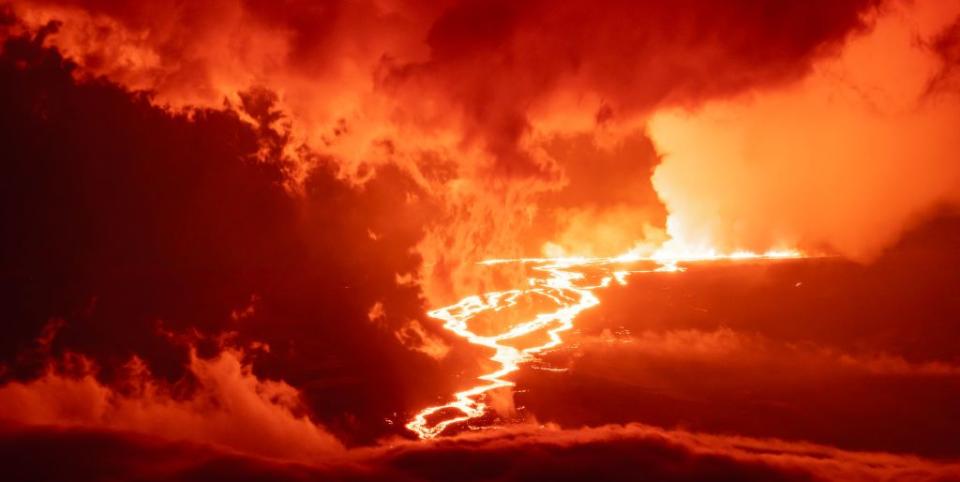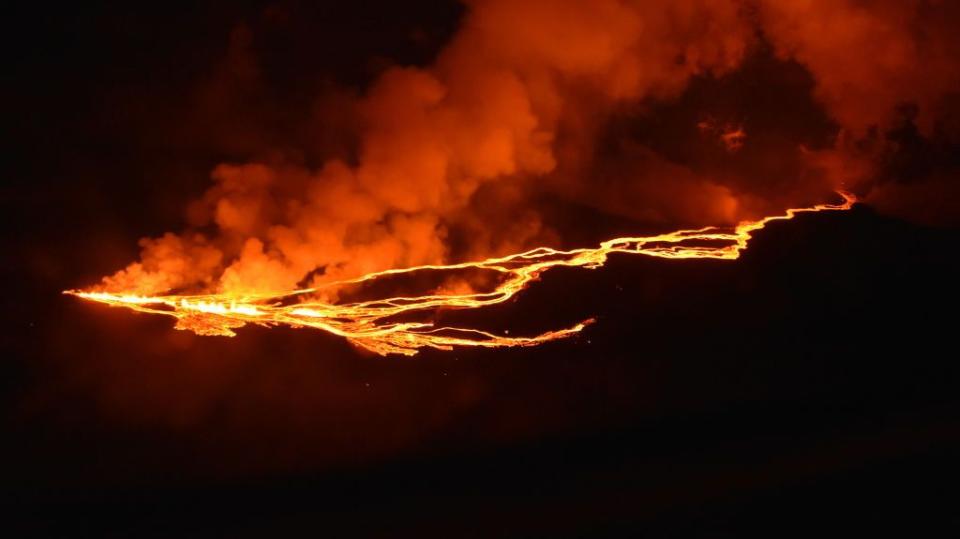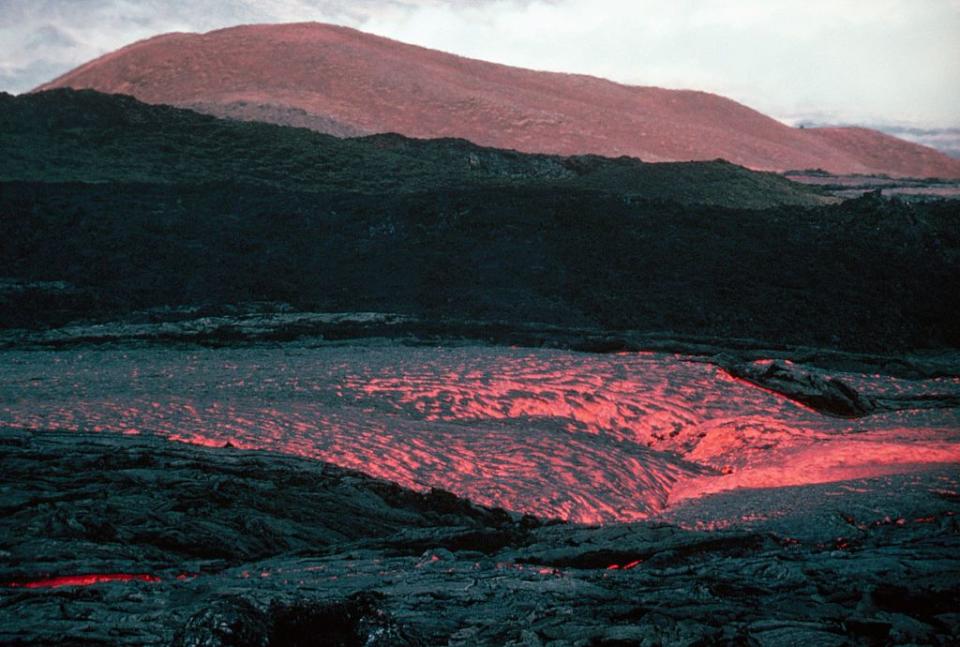How the Mauna Loa Eruption Could Help Scientists Understand Volcanoes Like Never Before

The world’s largest volcano has erupted for the first time since 1984, and it could prove a scientific bounty.
Lava flows continue to head toward Saddle Road, the main highway connecting the two sides of the Island of Hawaii.
Crystals found in lava can give insight into the history of magma before it even reaches the surface.
The scientific community is abuzz following the first eruption of Mauna Loa—the world’s largest volcano, situated on the Island of Hawaii—since 1984. The eruption occurred just before midnight on Sunday, giving researchers plenty to watch in the wake of the initial eruption, and plenty more to investigate when the event concludes.
🌋 Science explains the world around us. We’ll help you make sense of it all—join Pop Mech Pro.
“Mauna is the world’s largest volcano and we have a lot of instruments on the volcano,” Wendy Stovall, a United States Geological Survey (USGS) volcanologist, tells Popular Mechanics. “This eruption is providing us an opportunity to better understand how the volcano operates. It hasn’t erupted since 1984, and since that time there have been numerous technological advances to better understand volcanoes in general.”
From better understanding how magma moves through a volcano to watching earthquake reactions to creating better models of potential lava flows, the work has already begun for scientists like Stovall who plan on gleaning data from the eruption event.
Monitoring Lava Flows
When magma erupts out of a volcano and reaches Earth’s surface, it’s called lava. The Mauna Loa eruption occurred in the summit caldera area of the volcano, containing the bulk of lava within the summit area, although lava started flowing downslope in the northeast rift zone. Less than 48 hours after the eruption, lava flows continued to extend for miles down the slope, Stovall says.
“As long as flows continue at the rate they are going, it is possible that the road could be intersected in a few days,” she says about the potential for lava engulfing Saddle Road, the main infrastructure connecting the two sides of the Island of Hawaii. “If it does cover that road, it would have a huge impact. If it does cross that road and move to the east, we will start doing projections for the impact to communities on the outskirts of Hilo.”
As additional fissures continue to open, with the potential for even more throughout the week (even in the northwest rift zone), Stovall says flows could move to the south and east instead of remaining only within the north and east, which could create additional hazards.
Crews in helicopters, airplanes, and even on foot are continually monitoring the flows, measuring them to determine the lava’s width and thickness. Scientists use those calculations to come up with a volume estimate of how much lava has erupted, Stovall says, providing an eruption rate that can then create a forecast model. “We can add all that mass together into a topography-based mathematical model that provides a potential rate for flows to reach certain areas,” she says. “Modeling is very important for emergency management.”
Carmen Solana, reader in volcanology at the University of Portsmouth, tells Popular Mechanics that as a lava flow specialist, the array of opportunity for study is immense: gathering data about lava output; mapping lava flow and behavior; and determining the composition of the rocks to see the depths they came from in order to understand their behavior when flowing as lava.
Studying Magma Like Never Before

The USGS is constantly looking at earthquake activity on Mauna Loa. So far, the team has seen plenty of smaller earthquake events caused by moving magma and fracturing rocks, but there is always a chance of a decompression event that leads to a larger earthquake. “We haven’t seen any signs of that occurring so far,” Stovall says. It’s worth noting, though, that small earthquake activity in the region increased in late September, signifying the potential for an impending eruption.
Earthquakes migrate upward and laterally, but their characteristics change with variations in magma gas content, intersections with the ground water table, and interactions with existing fractures and fissures, Cynthia Ebinger, a geologist at the Tulane University School of Science and Engineering in New Orleans, Louisiana, tells Popular Mechanics. “Given the long record of baseline monitoring, the simultaneous earthquake, gas emissions, and ups and downs of the ground surface will provide unprecedented opportunities to understand magma movement underground.”
A big question for a basaltic shield volcano like Mauna Loa is when the magma chamber will begin to refill. Ebinger says she will be watching that movement, and will be keen to separate the pattern of earthquakes associated with magma movement below the surface from fractures developing above the magma.
Acquiring Samples for Further Study

Along with the constant monitoring of lava flows and earthquakes, the chance for further research abounds. Stovall says that some “amazing” samples of lava from the 1984 eruption proved important then and she hopes her team can acquire plenty of additional samples from this event. So far, the team only has one sample because of the extreme temperatures and difficult conditions.
By studying the lava, Stovall says scientists can research chemicals to better understand what happens inside the mountain. Crystals form within the lava, and depending on how those crystals appear, researchers can better understand how long the crystal was stored in the mountain and how long it took for it to come to the surface.
“I think,” Stovall says, “the scientific opportunity to really get to know Mauna Loa better is one of the most exciting things about the eruption.”
You Might Also Like
